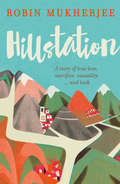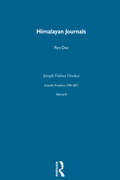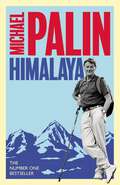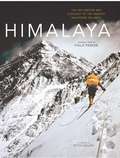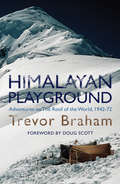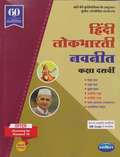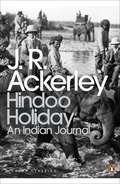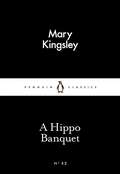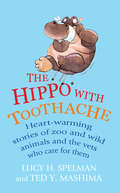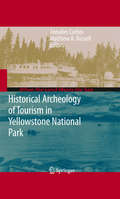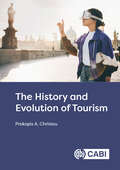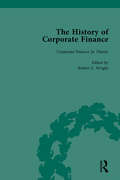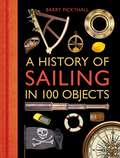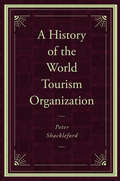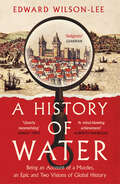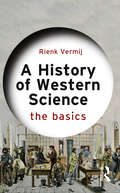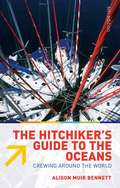- Table View
- List View
Hillstation: A charming story of true love, sacrifice…and luck
by Robin MukherjeeDreaming of escape from his remote village in the Himalayan foothills, Rabindra entreats the gods to send him an English bride. When a saucy English dance troupe arrives on the run from a Bombay crime boss, Rabindra believes that his prayers have been answered. Except that they have no interest in marrying anyone. As the village begins to unravel in the presence of these scandalous foreigners, surprising secrets emerge from the depths of its past.A story of true love, sacrifice, causality... and luck. In some ways it is a love-poem to a glorious, intriguing and sometimes frustrating culture still alive in the far corners of a great continent, but slowly fading to the onslaught of the technological age.------------------'Smart, funny, thought-provoking, entertaining — a delightful treat that kept me chuckling and made me sorry to see it end' - Bella Reads And Reviews Books'Slowly charms its way into your heart and leaves you with a smile on your face!' - The Book Reviewers'Hillstation is well written, and Mukherjee's local characters are cleverly shaped around traditional ideals and Indian culture' - Culturefly
Hima Jour V1:Sci Tra 1790-1877
by Joseph Dalton HookerFirst published in 2003. Sir Joseph Hooker (1817-1911) was one of the greatest British botanists and explorers of the nineteenth century. He succeeded his father as Director of the Royal Botanic Gardens, Kew, and was a close friend and supporter of Charles Darwin. His journey to the Himalayas and India was undertaken between 1847 and 1851 to collect plants for Kew, and his account, published in 1854, was dedicated to Darwin. Hooker collected some 7,000 species in India and Nepal, and carried out surveys and made maps which proved of economic and military importance to the British. He makes many observations about the inhabitants of the areas he visited, making this volume a useful resource for anyone interested in nineteenth-century India.
Hima Jour V1:Sci Tra 1790-1877
by David KnightFirst published in 2003. Sir Joseph Hooker (1817-1911) was one of the greatest British botanists and explorers of the nineteenth century. He succeeded his father as Director of the Royal Botanic Gardens, Kew, and was a close friend and supporter of Charles Darwin. His journey to the Himalayas and India was undertaken between 1847 and 1851 to collect plants for Kew, and his account, published in 1854, was dedicated to Darwin. Hooker collected some 7,000 species in India and Nepal, and carried out surveys and made maps which proved of economic and military importance to the British. He makes many observations about the inhabitants of the areas he visited, making this volume a useful resource for anyone interested in nineteenth-century India.
Himalaya: The Journey (Orion 20th Anniversary Editions Ser.)
by Michael PalinMichael Palin tackles the full length of the Himalaya in this terrific number one bestseller.Having risen to the challenge of seas, poles, dhows and deserts, the highest mountains in the world were a natural target for Michael Palin. In a journey rarely, if ever, attempted before, in 6 months of hard travelling Palin takes on the full length of the Himalaya including the Khyber Pass, the hidden valleys of the Hindu Kush, ancient cities like Peshawar and Lahore, the mighty peaks of K2, Annapurna and Everest, the gorges of the Yangtze, the tribal lands of the Indo-Burmese border and the vast Brahmaputra delta in Bangladesh.Facing altitudes as high as 17,500 feet as well as some of the world's deepest gorges, Palin also passed through political flashpoints like Pakistan's remote north-west frontier, terrorist-torn Kashmir and the mountains of Nagaland, only recently open to visitors.
Himalaya: The exploration and conquest of the greatest mountains on earth
by Phillip Parker Philip Parker Peter HillaryAt some 1500 miles long and 250 miles at its widest, the Himalaya range is home to the fourteen greatest mountain peaks on the planet each of which towers over 8,000 metres. Celebrated by the region's early ancient kingdoms, many of these peaks remain sacred in both the Hindu and Buddhist religions and have additionally inspired western explorers and adventurers for some 300 years.Himalaya examines the geographical origins of the region, its earliest peoples and the onward western discovery and exploration commencing with the Jesuits, progressing through myriad nineteenth century gentlemen surveyors, culminating in Edmund Hilary and Tensing Norgay's ascent of Everest in 1953 and continuing to the present day with extreme mountaineers and adventure tourists. However the book does not solely deal with the attempts to summit the majestic Everest. Its broader brief, and chronological structure, allows the inclusion of narrative and journal extracts from the equally heroic pioneering ascents of Himalayan peaks including K2 (1954), Nanga Parbat (1953), Annapurna (1950), Kangchenjunga (1955), and Lhotse (1956) as well as subsequent new frontiers, peaks, routes and mountaineering techniques.The volume includes specially commissioned pieces where legendary climbers reflect on their intrepid experiences and heroism on the highest mountains on earth. These accounts are set beside stunning commissioned cartography, historical photographs, newly shot stills of ephemera and artifacts as well as the most recent Himalayan work from some of the world's leading adventure photographers.
Himalayan Playground: Adventures On The Roof Of The World, 1942-72
by Trevor BrahamDuring the twilight years of the British Raj Trevor Braham spent much of his boyhood in India where, in the mid-1930s, he attended a boarding school in Darjeeling for four years. Dwelling within sight of the magnificent spectacle of Kangchenjunga and its satellite peaks exerted a strong influence upon him, arousing later ambitions. After early trips to Sikkim he joined the Himalayan Club marking a threshold of half-a-lifetime of adventures and activities in the mountain ranges spread across the northern regions of the Indian sub-continent, from Sikkim in the South-east to Chitral in the North-west in an environment very different from the present day. His halcyon years extended from 1942 to 1972, part of the earlier period corresponding with the Himalayan Golden Age in the 1960's when an international frenzy developed for climbing the world's highest mountains. In between he enjoyed summer climbing in the Swiss Alps, joining the Alpine Club and the Swiss Alpine Club.As one of the Himalayan Club's earliest members, he was invited to give the opening address at its 80th anniversary celebrations held in Mumbai in February 2008. Trevor Braham's final work on his life and times in the Himalayas is an insight into the Golden Age of Himalayan exploration when he spent all of his free time until he married on numerous expeditions into the world's greatest mountain range. This is a telling insight into a time when mountains were not subjected to the all-out onslaught of tourist climbers ticking off the peaks as they went, leaving a landscape littered with waste. These are the recollections of a bygone era in mountaineering, never to return.
Hindi Lokbharati Digest class 10 - Maharashtra Board Guide: हिंदी लोकभारती डाइजेस्ट कक्षा 10 - महाराष्ट्र बोर्ड मार्गदर्शन
by Shri Navneetहिंदी लोकभारती नवनीत दसवीं कक्षा का पाठपुस्तक हिंदी भाषा में नवनीत एज्युकेशन लिमिटेड ने प्रकाशित किया गया है, इस पाठपुस्तक में गद्य, पद्य तथा पूरक पठन के सभी पाठों को यथायोग्य गद्यांश/पद्यांश में बाँटकर उन पर पाठ्यपुस्तक की एवं अन्य अनेक कृतियाँ दी गई हैं। कृतिपत्रिका के प्रारूप में कविता पर आधारित 6 अंकों का पद्य विश्लेषण प्रश्न समाहित किया गया है । प्रारूप में दिए गए मुद्दों के आधार पर सभी कविताओं का पद्य विश्लेषण किया गया है । कक्षा दसवीं की कृतिपत्रिका के प्रारूप में व्याकरण पर काफी जोर दिया गया है । इस बात को ध्यान में रखते हुए प्रस्तुत नवनीत में व्याकरण के विविध घटकों पर अनेक कृतियाँ हरएक गद्य-पद्य में दी गई हैं । पुस्तक के अंत में दिए गए ‘भाषा अध्ययन (व्याकरण) विभाग' में इन विविध घटकों को समझाया भी गया है ।
Hindoo Holiday: An Indian Journal (Penguin Modern Classics)
by J. R. Ackerley William DalrympleIn the 1920s, the young J. R. Ackerley spent several months in India as the personal secretary to the maharajah of a small Indian principality. In his journals, Ackerley recorded the Maharajah's fantastically eccentric habits and riddling conversations, and the odd shambling day-to-day life of his court. Hindoo Holiday is an intimate and very funny account of an exceedingly strange place, and one of the masterpieces of twentieth-century travel literature.
A Hippo Banquet (Penguin Little Black Classics)
by Mary Kingsley'While engaged on this hunt I felt the earth quiver under my feet, and heard a soft big soughing sound, and looking round saw I had dropped in on a hippo banquet...'Told with verve and self-mocking wit, the adventures of doughty female Victorian explorer Mary Kingsley describe stumbling upon five hippos by night, dodging elephants and fighting off a leopard with a stool.Introducing Little Black Classics: 80 books for Penguin's 80th birthday. Little Black Classics celebrate the huge range and diversity of Penguin Classics, with books from around the world and across many centuries. They take us from a balloon ride over Victorian London to a garden of blossom in Japan, from Tierra del Fuego to 16th-century California and the Russian steppe. Here are stories lyrical and savage; poems epic and intimate; essays satirical and inspirational; and ideas that have shaped the lives of millions.Mary Kingsley (1862-1900). Kingsley's work is available in Penguin Classics in Travels in West Africa.
The Hippo with Toothache: Heart-warming stories of zoo and wild animals and the vets who care for them
by Lucy H Spelman Ted Y MashimaMeet Mohan, a rhino with painfully sore feet.And Patch, a falcon with a broken wishbone.And Kachina, a bear cub with brittle bones.Not to mention Alfredito, a hippo suffering from a sever bout of toothache.All these animals owe their lives to the dedicated zoo and wild animal vets who employ boundless ingenuity and expertise to care for them and who, in this beguiling book, tell the stories of their most memorable cases. They describe not only the meticulous detective work that goes into making a diagnosis but also the pioneering techniques they have developed. And they talk freely and movingly about the bonds they form with their exotic patients.. Whether it's one doctor's determined effort to save a critically ill lemur, the neurosurgeon who was persuaded to operate on a paralysed kangaroo, or the vet who refused to give up on an orphaned baby beluga whale, these are acts of rescue, kindness and co-operation that will warm every animal lover's heart.
Historical Archeology of Tourism in Yellowstone National Park (When the Land Meets the Sea)
by Annalies Corbin Matthew A. RussellFar too often in the ?eld of archeology, the wheel of understanding and insight has a narrow focus that fails to recognize critical studies. Crucial information rega- ing pivotal archeological investigations at a variety of sites worldwide is extremely dif?cult, if not impossible, to obtain. The majority of archeological analysis and reporting, at best, has limited publication. The majority of archeological reports are rarely seen and when published are often only in obscure or out-of-print journals – the reports are almost as hard to ?nd as the archeological sites themselves. There is a desperate need to pull seminal archeological writings together into single issue or thematic volumes. It is the int- tion of this series, When the Land Meets the Sea, to address this problem as it relates to archeological work that encompasses both terrestrial and underwater archeology on a single site or on a collection of related sites. For example, despite the fact that we know that bays and waterways structured historic settlement, there is a lack of archeological literature that looks at both the nautical and terrestrial signatures of watersheds in?uence on historic culture.
Historical changes in part of the city of Derby map (UEB Uncontracted)
by Adrian FarnsworthThree tactile maps showing the same area of Derby between 1852 and the present day. Each map contains multiple layers (houses, fields etc.) which can be switched on or off for printing. The fourth page contains a key. Each map includes the original bitmap as a hidden layer.
Historical maps of an area of Derby (tactile)
by Adrian FarnsworthThree maps of an area of Derby around Markeaton. The Maps are tactile. From 1852, 1901 and 2009. They show the development of this area of the city.
The History and Evolution of Tourism
by Dr Prokopis A ChristouThis book provides an overview of the history and evolution of tourism to the present, and speculates on possible and probable change into the future. It discusses significant travel, tourism and hospitality events while referring to tourism-related notions and theories that have been developed since the beginnings of tourism. Its scope moves beyond a comprehensive historical account of facts and events. Instead, it bridges these with contemporary issues, challenges and concerns, hence enabling readers to connect tourism past with the present and future. This textbook aspires to enhance readers' comprehension of the perplexed system of tourism, promoting decision-making and even the development of new theories. Despite its academic orientation, the book is written in an approachable style enabling a clear and solid understanding of how tourism has evolved through the centuries. It uses several practitioner-linked, real-life examples and case studies derived from organizations and enterprises across all aspects of the tourism, travel and events industries. This book will be of great interest to academics, practitioners and students from a wide variety of disciplines, including tourism, hospitality, events, sociology, psychology, philosophy, history and human geography.
The History of Corporate Finance: Developments of Anglo-American Securities Markets, Financial Practices, Theories and Laws Vol 6
by Robert E Wright Richard SyllaThis work contains primary research texts regarding two centuries of the development of corporate finance in the US and Great Britain. It is designed to help scholars, financial managers, and public policymakers to investigate the historical background of issues in contemporary corporate finance.
The History of Corporate Finance: Developments of Anglo-American Securities Markets, Financial Practices, Theories and Laws Vol 6
by Robert E Wright Richard SyllaThis work contains primary research texts regarding two centuries of the development of corporate finance in the US and Great Britain. It is designed to help scholars, financial managers, and public policymakers to investigate the historical background of issues in contemporary corporate finance.
A History of Sailing in 100 Objects
by Barry PickthallDid you ever wonder which civilisation first took to water in small craft? Who worked out how to measure distance or plot a course at sea? Or why the humble lemon rose to such prominence in the diets of sailors?Taking one hundred objects that have been pivotal in the development of sailing and sailing boats, the book provides a fascinating insight into the history of sailing. From the earliest small boats, through magnificent Viking warships, to the technology that powers some of the most sophisticated modern yachts, the book also covers key developments such as keeps and navigational aids such as the astrolabe, sextant and compass. Other more apparently esoteric objects from all around the world are also included, including the importance of citrus fruit in the prevention of scurvy, scrimshaw made from whalebone and the meaning of sailor's tattoos.Beautifully illustrated with lively and insightful text, it's a perfect gift for the real or armchair sailor, the book gives an alternative insight into how and why we sail the way we do today.
A History of Sailing in 100 Objects
by Barry PickthallDid you ever wonder which civilisation first took to water in small craft? Who worked out how to measure distance or plot a course at sea? Or why the humble lemon rose to such prominence in the diets of sailors?Taking one hundred objects that have been pivotal in the development of sailing and sailing boats, the book provides a fascinating insight into the history of sailing. From the earliest small boats, through magnificent Viking warships, to the technology that powers some of the most sophisticated modern yachts, the book also covers key developments such as keeps and navigational aids such as the astrolabe, sextant and compass. Other more apparently esoteric objects from all around the world are also included, including the importance of citrus fruit in the prevention of scurvy, scrimshaw made from whalebone and the meaning of sailor's tattoos.Beautifully illustrated with lively and insightful text, it's a perfect gift for the real or armchair sailor, the book gives an alternative insight into how and why we sail the way we do today.
A History of the World Tourism Organization
by Peter ShacklefordTourism and travel have been with us since time immemorial. However, with the onset of the industrial age and the use of railways, ships, motorcars, and aeroplanes, travelling possibilities—for both business and pleasure, domestic and international—were transformed. The annals of the United Nations World Tourism Organization (UNWTO) provide us with unmatched insights into this fascinating story, yet these archives have never been exhaustively exploited. The History of the World Tourism Organization takes us on a unique journey to explain how tourism has burgeoned between the early twentieth century and now. Drawing on the UNWTO’s regularly published tourism statistics, this book provides comprehensive discussions of the consequences of an unhindered flow of tourists; the consequent protection of natural assets; the safeguarding of tourism resources; how frontier formalities affect this sector; how tourism impacts on world trade; and the promotion of tourism to countries in economic decline. Collectively, these investigations offer an impartial understanding of modern tourism and its effects. This definitive overview of this major intergovernmental organization is a must-read for students and scholars of tourism and hospitality, and it is of interest to anyone concerned with the past, present, and future of this ever-evolving and fundamentally human practice.
A History of the World Tourism Organization
by Peter ShacklefordTourism and travel have been with us since time immemorial. However, with the onset of the industrial age and the use of railways, ships, motorcars, and aeroplanes, travelling possibilities—for both business and pleasure, domestic and international—were transformed. The annals of the United Nations World Tourism Organization (UNWTO) provide us with unmatched insights into this fascinating story, yet these archives have never been exhaustively exploited. The History of the World Tourism Organization takes us on a unique journey to explain how tourism has burgeoned between the early twentieth century and now. Drawing on the UNWTO’s regularly published tourism statistics, this book provides comprehensive discussions of the consequences of an unhindered flow of tourists; the consequent protection of natural assets; the safeguarding of tourism resources; how frontier formalities affect this sector; how tourism impacts on world trade; and the promotion of tourism to countries in economic decline. Collectively, these investigations offer an impartial understanding of modern tourism and its effects. This definitive overview of this major intergovernmental organization is a must-read for students and scholars of tourism and hospitality, and it is of interest to anyone concerned with the past, present, and future of this ever-evolving and fundamentally human practice.
A History of Water: Being An Account Of A Murder, An Epic And Two Visions Of Global History
by Edward Wilson-Lee‘Exhilarating and whip-smart’ THE SUNDAY TIMES ’A mind-blowing achievement’ ALBERTO MANGUEL
A History of Western Science: The Basics (The Basics)
by Rienk VermijA History of Western Science: The Basics offers a short introduction to the history of Western science that is accessible to all through avoiding technical language and mathematical intricacies. A coherent narrative of how science developed in interaction with society over time is also provided in this comprehensive guide. The first part discusses the period up to 1700, with a focus on the conceptual shift and new ideas about nature that occurred in early modern Europe. Part two focusses on the practical and institutional aspects of the scientific enterprise and discusses how science established itself in Western society post 1700s, while part three discusses how during the same period modern science has impacted our general view of the world, and reviews some of the major discoveries and debates. Key topics discussed in the book include:• Natural philosophy, medicine, and mathematics in the ancient and medieval worlds• The key figures in the history of science—Galileo, Descartes, Isaac Newton, Darwin and Einstein—as well as lesser-known men and women who have developed the field• The development of scientific instruments, the transformation of alchemy into chemistry, weights and measures, the emergence of the modern hospital and its effects on medicine, and the systematic collection of data on meteorology, volcanism, and terrestrial magnetism• The big questions – the origins of humans, the nature of reality and the impact of science. As a jargon-free and comprehensive study of the history of Western science, this book is an essential introductory guide for academics and researchers of the history of science, as well as general readers interested in learning more about the field.
A History of Western Science: The Basics (The Basics)
by Rienk VermijA History of Western Science: The Basics offers a short introduction to the history of Western science that is accessible to all through avoiding technical language and mathematical intricacies. A coherent narrative of how science developed in interaction with society over time is also provided in this comprehensive guide. The first part discusses the period up to 1700, with a focus on the conceptual shift and new ideas about nature that occurred in early modern Europe. Part two focusses on the practical and institutional aspects of the scientific enterprise and discusses how science established itself in Western society post 1700s, while part three discusses how during the same period modern science has impacted our general view of the world, and reviews some of the major discoveries and debates. Key topics discussed in the book include:• Natural philosophy, medicine, and mathematics in the ancient and medieval worlds• The key figures in the history of science—Galileo, Descartes, Isaac Newton, Darwin and Einstein—as well as lesser-known men and women who have developed the field• The development of scientific instruments, the transformation of alchemy into chemistry, weights and measures, the emergence of the modern hospital and its effects on medicine, and the systematic collection of data on meteorology, volcanism, and terrestrial magnetism• The big questions – the origins of humans, the nature of reality and the impact of science. As a jargon-free and comprehensive study of the history of Western science, this book is an essential introductory guide for academics and researchers of the history of science, as well as general readers interested in learning more about the field.
Hit Factories: A Journey Through the Industrial Cities of British Pop
by Karl WhitneyAfter discovering a derelict record plant on the edge of a northern English city, and hearing that it was once visited by David Bowie, Karl Whitney embarks upon a journey to explore the industrial cities of British pop music.Manchester, Liverpool, Newcastle, Leeds, Sheffield, Hull, Glasgow, Belfast, Birmingham, Coventry, Bristol: at various points in the past these cities have all had distinctive and highly identifiable sounds. But how did this happen? What circumstances enabled those sounds to emerge? How did each particular city - its history, its physical form, its accent - influence its music? How were these cities and their music different from each other? And what did they have in common?Hit Factories tells the story of British pop through the cities that shaped it, tracking down the places where music was performed, recorded and sold, and the people - the performers, entrepreneurs, songwriters, producers and fans - who made it all happen. From the venues and recording studios that occupied disused cinemas, churches and abandoned factories to the terraced houses and back rooms of pubs where bands first rehearsed, the terrain of British pop can be retraced with a map in hand and a head filled with music and its many myths.
The Hitchiker's Guide to the Oceans: Crewing Around the World
by Alison Muir BennettWhat better way of travelling the world than by crewing on a yacht? The Hitchiker's Guide to the Oceans is ideal for crew pre-planning, and for skippers seeking crew. It is packed with practical information from how to find a crew position, what to expect from different kinds of skipper, how to be in the right place at the right time, where the yachts gather and when, to rally locations, how to maximise your chances of being taken on as crew, what will be expected of you as crew, and job opportunities along the way. Unique yacht migration maps show where the seasonal bottlenecks occur, and help pinpoint the best places and times of year to gain a crew place. This sixth edition with fully updated information and website addresses as well as a new colour section will be welcomed by all aspiring yacht crew, and also as a skipper's reference. 'Packed with all the information you'd need to find a crewing position... an invaluable guide to crewing anywhere in the world.' Yachting Monthly'Valuable for the first-timer and useful for skippers and their potential crew.' Classic Boat
